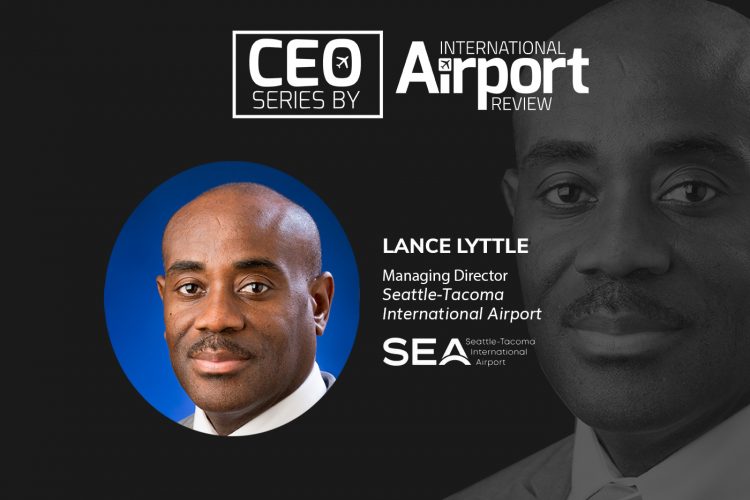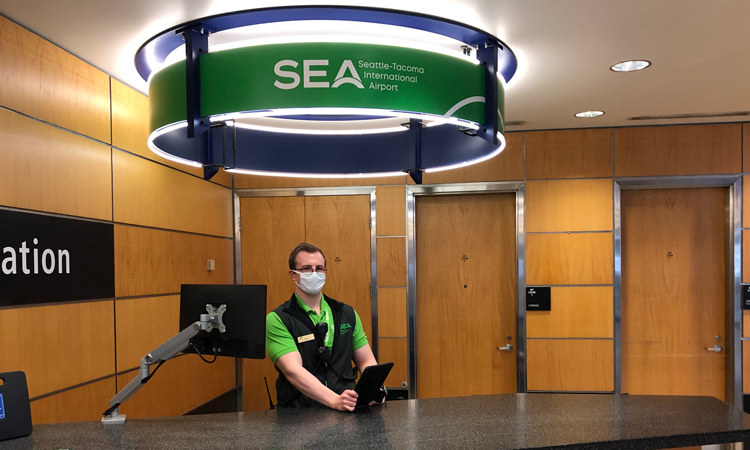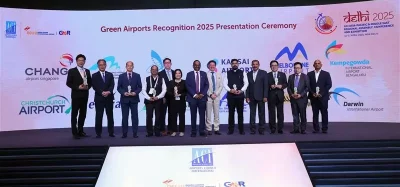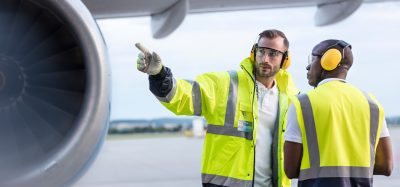Seattle-Tacoma Airport’s MD says touchless technology will be imperative
- Like
- Digg
- Del
- Tumblr
- VKontakte
- Buffer
- Love This
- Odnoklassniki
- Meneame
- Blogger
- Amazon
- Yahoo Mail
- Gmail
- AOL
- Newsvine
- HackerNews
- Evernote
- MySpace
- Mail.ru
- Viadeo
- Line
- Comments
- Yummly
- SMS
- Viber
- Telegram
- Subscribe
- Skype
- Facebook Messenger
- Kakao
- LiveJournal
- Yammer
- Edgar
- Fintel
- Mix
- Instapaper
- Copy Link
Posted: 19 June 2020 | International Airport Review | No comments yet
As part of International Airport Review’s CEO Series, Lance Lyttle, Managing Director of Seattle-Tacoma International Airport (SEA), discusses how airports are going to have to adapt and alter traditional processes for a post-COVID-19 world.


How did your career in the aviation industry begin?
While I’m thrilled to be in aviation now, my degrees are actually in computer science and physics, and most of my early career was in the mining industry.
I was approached about an opportunity with Hartsfield-Jackson Atlanta International Airport (ATL) in 1999, which lead to my first role within the industry as Chief Information Officer. At the time, ATL was, and continues to be, ranked as the busiest airport in the world, and I was hired in anticipation of Y2K.
After more than a decade with ATL, I joined the Houston Airport System as Chief Strategy and Performance Officer. I was later asked to serve in the role of Chief Development Officer with the responsibility for the planning, design and construction of the capital development programme. I was quickly elevated to Chief Operating Officer, leading the daily management and operations of Houston’s three airports: George Bush Intercontinental Airport (IAH), William P. Hobby Airport (HOU) and Ellington Airport (EFD).
Ultimately, I joined the Port of Seattle as Managing Director of Seattle-Tacoma International Airport (SEA) in 2016. When making the decision to come to SEA, I looked at the region our airport serves as a major factor in the success of an airport. Seattle and the Puget Sound region were booming. This growth trend continued until the COVID-19 global pandemic, as SEA is a top-10 U.S. airport, serving 51.8 million passengers and 453,549 metric tonnes of air cargo in 2019.
What is the most rewarding aspect of being an airport CEO? On the other hand, what is most difficult?
Prior to COVID-19, there were 19,000 employees at SEA with 350 different airport employers. In addition, the airport is responsible for creating more than 150,000 jobs. Helping to create thousands of quality jobs is the most rewarding part of my work. Within my own family, when I was young, I experienced how a living wage job can alter the trajectory of an entire family and be a catalyst for generations. Contributing to our community and economy by creating jobs and opportunities – especially for women, minorities and disadvantaged business enterprises – is incredibly meaningful to me.
Conversely, the most challenging part of leading SEA is balancing the growth of the Puget Sound region and ensuring that the airport serves the needs of the region while mitigating the impacts for communities closest to the airport. We work hard to reduce those negative impacts with one of the top sustainability programmes in the U.S., from airport noise to climate and air quality, to waste reduction and recycling.
I’m also proud of our community engagement. The Seattle-Tacoma Airport Stakeholder Advisory Round Table (StART) is a way for the communities adjacent to the airport to engage and collaborate with airport staff, airlines and the Federal Aviation Administration (FAA) on policies and everyday actions to reduce impacts on surrounding cities.
Can you give us an overview of the three most exciting developments currently happening at your airport?
In response to the global COVID-19 pandemic, and working closely with our partners, SEA is committed to keeping our passengers, employees and community safe and healthy. Most passengers continue to follow guidance to avoid non-essential travel; actions that help us to maintain the health and safety of those performing essential work. We are also preparing for the gradual reopening of the economy. As part of that work, these are the categories of work I am most excited about and heartened by right now.
FlyHealthy@SEA is our strategy to ensure the health and wellbeing of our passengers, visitors and workers. The campaign seeks to inspire customers to make behavioural changes, such as physical distancing and wearing face coverings, whilst also leaning into positivity. We want to earn the confidence of passengers and employees by establishing SEA as ahead of the curve in protecting health and safety and restoring the economic vitality of the airport and the region’s greater economy.


Credit: Seattle-Tacoma International Airport
Secondly, the Port of Seattle’s phased workforce and operational recovery plan, Safe Return, is how we are evolving our work environment due to COVID-19. From spatial planning and physical distancing to cleaning and disinfecting, we are preparing for the incremental return of our workforce to the office. I look forward to seeing my colleagues on more than video conferences again soon.
Lastly, the temporary decrease in air travel created an unexpected opportunity to accelerate certain phases of our construction projects. Project teams are expanding construction work zones while there are less people in the terminal, and temporary closures of select apron and taxi lane areas have advanced time-consuming work. At the same time, construction partners are implementing new practices to meet safety and physical distancing requirements. These construction activities and efforts are critical for supporting regional recovery, keeping the workforce employed and continuing the delivery of critical infrastructure.
What is the biggest challenge your airport is having to tackle?
It is incredibly difficult to predict the future for our industry’s recovery. The ability to forecast enplanements is anchored to much of our planning for budgets, operations and economic development. I wish we had better information to anticipate if the recovery will be W, L or U shaped as we strategise for the next six to 18 months.
At this moment in time, what do you see as the biggest disruptor to the aviation industry?
The global pandemic is the most significant disruption to the aviation industry that I have experienced in my career; drastically beyond 9/11 or economic recessions. I often hear ‘unprecedented’ to explain the impact of COVID-19 on communities worldwide, and it truly is an appropriate word. Prior to March 2020, airlines and airports were enjoying record levels of air travel and it will be several years before we regain that footing again.
In your opinion, how does the aviation industry need to adapt to secure its place in the future?
In the same way we have Directors of Security, I predict airports will expand leadership teams to include Directors of Health or Chief Health Officers”
To date, airports have held two fundamental functions: Security and safety. However, we now have a new, third primary duty to our passengers and employees, which is health. In the same way we have Directors of Security, I predict airports will expand leadership teams to include Directors of Health or Chief Health Officers to manage public health best practices and partnerships. At least, during the recovery phase.
What does the future of the aviation industry look like to you?
We were already advancing towards the integration of touchless technologies into airports, but I think that will now be accelerated post-COVID-19. The airport journey will become touchless from kerb to gate. Many of these innovations are being piloted, and there are challenges to overcome, but touchless will arrive in U.S. airports years earlier now.
For example, we recently launched pre-book parking at SEA to pay online for a safe and contactless transaction prior to arrival. Travellers drive their own vehicle to the airport and simply scan a QR code on their phone to enter/exit the garage.
The progress of touchless will also require us to evolve our customer experiences, as contactless options are added to navigate the entire travel experience without interacting with a human, if desired by the passenger.
Additionally, airports will need a bigger footprint to accommodate less passengers but still meet physical distancing requirements. It may not be a permanent shift, but, as part of the immediate recovery, we need more space – or to reconfigure spaces – to process less people. Innovation and technology will also play a central role. New ways of conducting our operations, such as virtual queues, may very well become the norm.
Correspondingly, there will be an enduring emphasis on cleaning and disinfection and healthy travelling.
Related topics
Airport construction and design, Airport crisis management, CEO series, Contactless / Touchless technology, COVID-19, Emissions, New technologies, Noise abatement, Passenger experience and seamless travel, Passenger volumes, Safety, Sustainable development, Terminal operations, Workforce
Related airports
Ellington Airport (EFD), George Bush Intercontinental Airport (IAH), Hartsfield-Jackson Atlanta International Airport, Seattle-Tacoma International Airport (SEA), William P. Hobby Airport (HOU)
Related organisations
Federal Aviation Administration (FAA), Houston Airport System, Port of Seattle


















